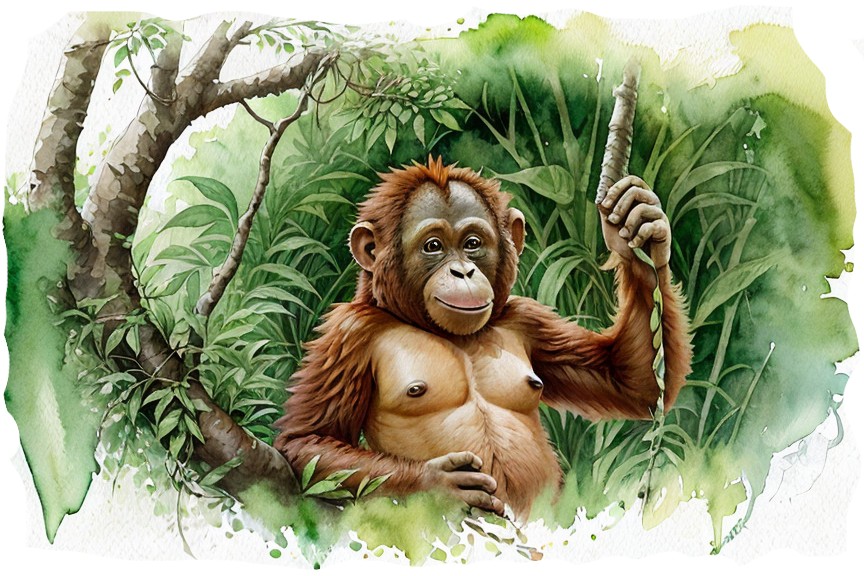There are countless fascinating animals in the world, each with its unique traits and characteristics. Here are just a few examples:
Blue whale: The largest animal on earth, the blue whale can grow up to 100 feet long and weigh over 200 tons. Their tongues alone can weigh as much as an elephant. Blue whales are blue-gray in color with white undersides. They have a heart the size of a small car and can eat up to 4 tons of krill per day. Blue whales can communicate with each other over hundreds of miles using low-frequency sounds that travel through water. They are also known for their long migrations.
Polar bear: The largest land predator on earth, the polar bear has adapted to life in the harsh Arctic environment with its thick fur and specialized hunting skills. They can weigh up to 750-kilograms (1,550 pounds) and can stand up to 3-metres (10-feet) tall. The average lifespan is 25 years and they can start to reproduce at age 4. Polar bears are classified as marine mammals because they spend most of their lives on the sea ice of the Arctic. They have an excellent sense of smell and can detect seals nearly a mile away. They are also known for their patience. They can wait for hours by a seal’s breathing hole in the ice for a seal to surface.
Mantis shrimp: With the ability to punch with the force of a .22 caliber bullet, the mantis shrimp is one of the strongest animals on earth relative to its size. They have the strongest striking power in the animal kingdom — as well as the fastest punch in the ocean. Mantis shrimps evolved separately from the class Malacostraca around 340 million years ago. There are around 451 known species of mantis shrimp. Mantis shrimps generally grow to around 4 inches (10 cm) in length. They may breed up to 20 to 30 times in their lifetime.
Platypus: The platypus is a highly distinctive mammal found in eastern Australia, known for its unusual combination of features. The only mammal that lays eggs, the platypus also has a unique electroreception ability that allows it to detect the electrical signals of its prey. This unique sense, known as electroreception, helps them locate prey even in dark or murky water. Platypuses lack a stomach! Instead, their esophagus connects directly to the intestines. This unique digestive system is believed to be an adaptation for their diet, which consists mainly of aquatic invertebrates.

Octopus: Highly intelligent and adaptable, octopuses have the ability to change color and shape to blend in with their surroundings and evade predators. Octopuses have three hearts that pump blue, copper-based blood. They are intelligent creatures and have been observed while using tools. Octopuses can be trained and have memory skills. All octopuses are venomous. Octopuses can remember and recognize individual humans.
Komodo dragon: The largest lizard on earth, the Komodo dragon can grow up to 10 feet long and has a venomous bite that can bring down prey much larger than itself. They are strong, aggressive and deadly hunters. As they have both male and female sex chromosomes, female dragons can reproduce asexually in a process called parthenogenesis.
Cheetah: Cheetahs are the fastest land animal in the world. They can typically reach speeds of up to 98 km/h (60 mph) in short bursts covering distances up to 460 meters (1,500 feet). Cheetahs don’t simply rely on their speed, they anticipate the escape tactics of different prey when hunting. The Cheetah tail helps them steer at high speed. Cheetahs tire quickly and need to rest after running for short distances. Nearly all wild cheetahs can be found in sub-Saharan Africa, where they roam open, grassy savannah plains and open forests.
Cuttlefish: With the ability to change both color and texture to match its surroundings, the cuttlefish is a master of camouflage and deception. They have a unique internal shell called a cuttlebone that helps them control their buoyancy. Cuttlefish have three hearts and blue-green blood. Cuttlefish have the ability to hypnotize their prey by flashing a pattern of colors on their skin. They are intelligent creatures that can learn from experience and have been known to solve problems.
Narwhal: With its long, spiraled tusk, the narwhal is one of the most unique animals in the world, and its purpose still remains a mystery to scientists. They are known for their long, spiral tusks that can grow up to 3 meters (10 feet) long. They have a unique vocalization system that allows them to communicate with each other over long distances. Narwhals are deep divers and can dive to depths of up to 1,500 meters (4,900 feet) to feed on fish and squid.

Orangutan: The largest tree-dwelling animal, orangutans are highly intelligent and have been observed using tools in the wild that are native to the rainforests of Indonesia and Malaysia. They are the largest arboreal (tree-dwelling) animals in the world.

